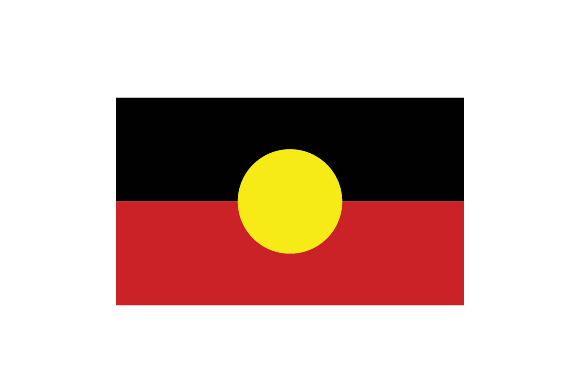- About Us
- Columns
- Letters
- Cartoons
- The Udder Limits
- Archives
- Ezy Reading Archive
- 2024 Cud Archives
- 2023 Cud Archives
- 2022 Cud Archives
- 2021 Cud Archives
- 2020 Cud Archives
- 2015-2019
- 2010-2014
- 2004-2009
 |
The 2023 Referendum on an Australian Indigenous ‘Voice’ |
Many Australians were disappointed with the defeat of a referendum to entrench an Indigenous voice to parliament in the Constitution. History shows that few of the proposed alterations to the country’s basic law have passed – 8 of 45 depending how you count. This rigidity is usually attributed to two factors: the requirement that an amendment must be approved by a double majority and the need for bipartisan support.
The double majority is an overall majority nationwide and also a majority in at least four of the six states, provided for in Section 128 of the Constitution.
The need for bipartisan support – by federal Government and Opposition - is popularly assumed, but leading scholar of polls Murray Goot has called the idea into question, especially as applied to the reasons for the defeat of the 2023 referendum.
The background to the referendum is that a previous Coalition Government with Labor support established a working party or Referendum Council to suggest ways to include Indigenous peoples in the Constitution. The party produced a report ‘Statement from the Heart’ in 2017. The title encapsulated the spirit of the outcome of the party’s deliberations and was delivered in the physical heart of Australia at Uluru. The report emphasised ‘Treaty, Truth and Voice’.
The government suggested that the report was too radical to gain wide support and did nothing to advance the issue. There seemed to be a distinct lack of leadership in this period. This was a time when the government reacted to demands for marriage equality by holding a voluntary postal plebiscite on the question. It legislated only when assured the issue had majority support.
When Labor won office in 2022 it had campaigned promising a referendum. It also promised a Makarrata – truth telling commission. As one elder, Aunty Pat Anderson has noted, the Uluru Statement was addressed to the Australian people, not to politicians. As she noted, politicians can be ‘fair weather friends’.
There were distinct problems involved in the referendum process. First, the question put to the people was rather more vague than most alteration proposals. Secondly, anecdotal evidence suggested that the question would fail, possibly because many voters did not want to commit to something so permanent. Thirdly, it was possible that politicians would interpret a negative result as having been gained in a plebiscite about the voice in general and indeed about Indigenous affairs overall.
Nevertheless, without mentioning these reservations – plenty of people were expressing doubts and I did not want to undermine the process further - I proudly campaigned for a ‘Yes’ vote which was something positive in a world of negativity. I recommended a ‘Yes’ vote for a more just future for all Australians.
Having been involved in the 1996 Centenary Bathurst Peoples Convention, I argued that it is important to use the Constitution rather than see it become moribund. The 1896 Convention had discussed formation of federation among the colonies, and is credited with restarting a process which was strong around 1891 but then became dormant.
After the referendum, I was appalled that I found myself agreeing with the Leader of the Opposition when he called for the resignation of the Prime Minister who had assured Australians that passing the Referendum was vital. Of course, the Opposition Leader was being somewhat disingenuous given that he campaigned for a ‘no’ vote.
In the aftermath of the referendum loss, Henry Reynolds has questioned the Prime Minister’s commitment to Indigenous affairs. Reynolds’ criticisms are fair because the Prime Minister has apparently chosen to interpret the referendum result as a plebiscite on Indigenous affairs.
In fact, the referendum was only about constitutional alteration and not even about whether Indigenous people should have a voice. The Prime Minister had a major role in formulating the question, which was in the end, too vague for majority acceptance. Most proposals spell out the section of the act which will be altered and often the specific wording of any alteration.
The Coalition emphasises ‘practical reconciliation’ but this has proven to be insufficient. Indeed reports on ‘closing the gap’ in social indicators between Indigenous and other Australians suggest that such measures are not working and perhaps never will. Progress has been slow and in some areas negative. Five of the 19 targets have been slow and four areas have worsened, including suicide and incarceration rates, children in out-of-home care and developmental standards when starting school.
Clearly, proposed solutions such as the three prongs of the Uluru Statement, including the provision of a voice, approach reconciliation from the angle of identity. Unfortunately, following the loss of the referendum, assimilation dominates policy once again. Proposals for increasing businesses for example, treat Indigenous people as similar to other Australians. In Billy Bragg’s terms, successive governments have given priority to ‘making the world safe for capitalism’.
In spite of paralysis at the federal level, two states are well advanced towards implementing the Uluru Statement. South Australia has an Indigenous voice to parliament. Victoria is well on the road to both Truth and Treaty processes. Neither state has experienced catastrophe because of the establishment of these initiatives. Their spirit of reconciliation puts the federal government to shame.
Dr Tony Smith is a former academic who now spends time busking and writing songs and reviews. He lives in the bush in the NSW Central West.
Lead photo by World Maps on StockSnap. Body article photo by Alex Wong on StockSnap.
